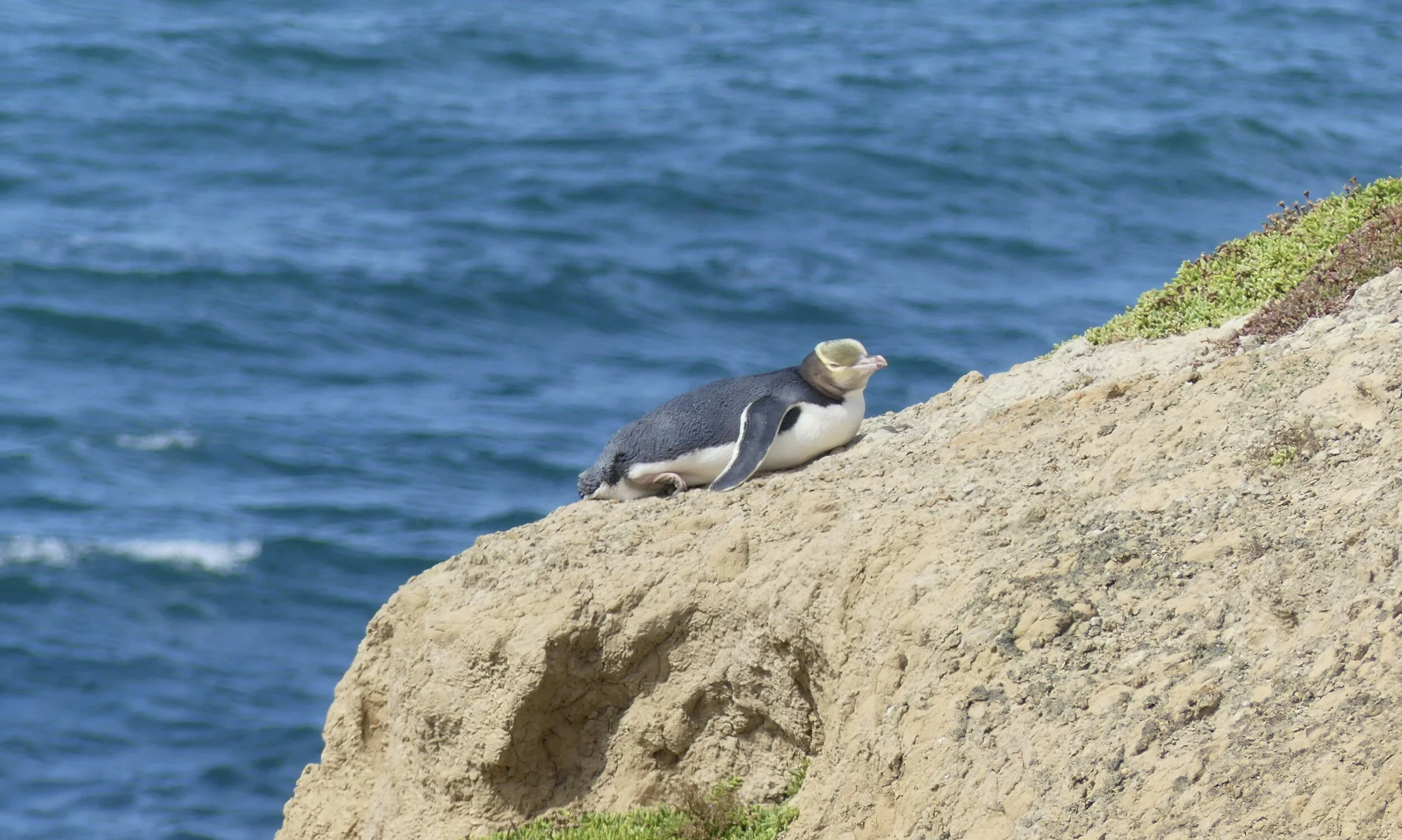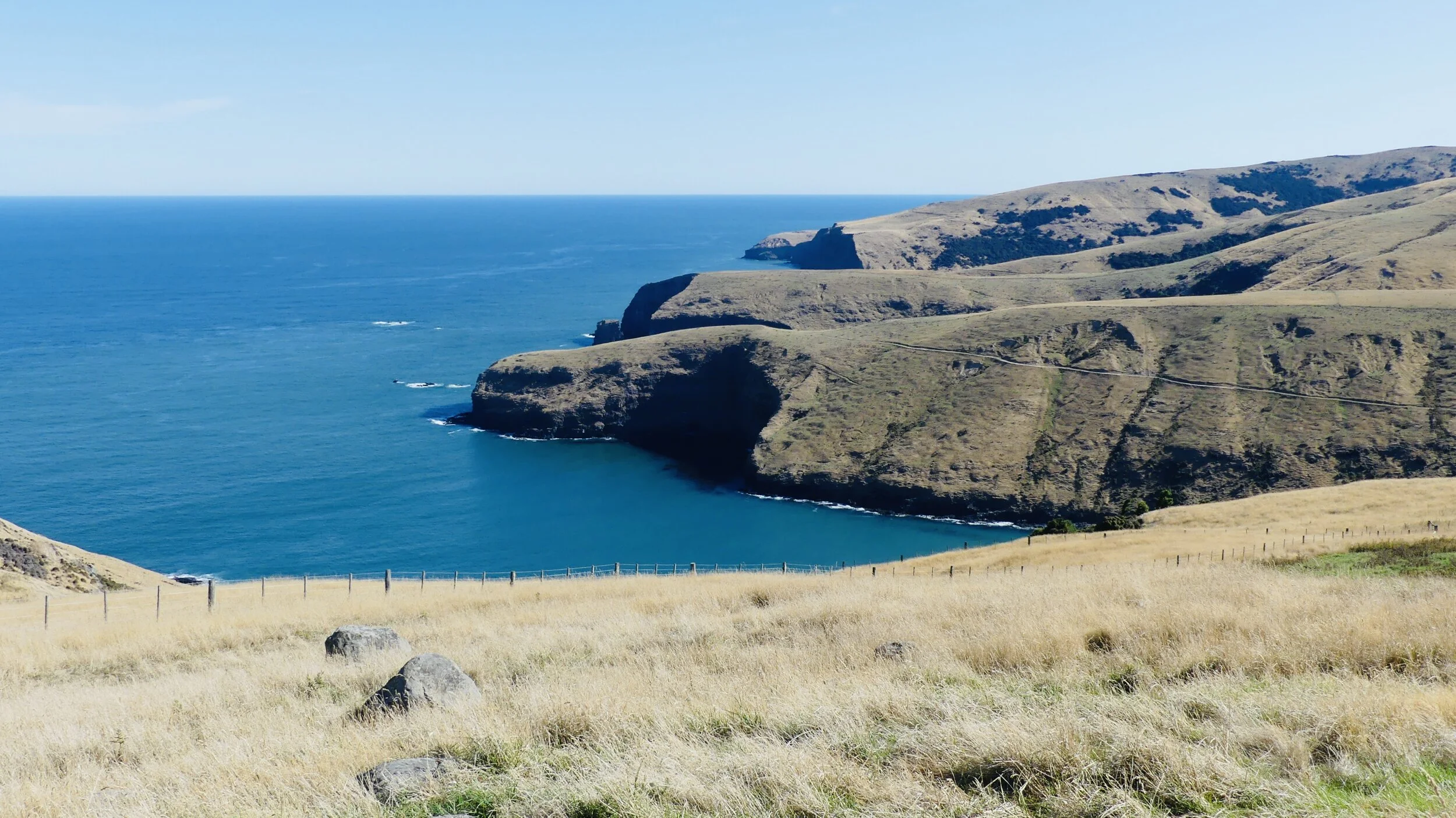Oamaru! What a lovely surprise
Braided rivers are a New Zealand thing. Briefly, a braided river has several channels separated by small and frequently reshaping islands made of a mixture of sand and gravel and known as braid bars. Braiding occurs in rivers that carry huge amounts of coarsely grained sediment and experience large and rapid variations in flow, such as those draining meltwater off mountain ranges.
I first observed this phenomenon on the Hāpuku River north of Kaikōura, in 2012; and there were more examples on the Canterbury Plains as we headed south from Akaroa. The Rakaia, sourced in the Southern Alps, is one of the largest in the country. It enters the Pacific Ocean 50 kilometres south of Christchurch.
The river we chose to explore a little bit more was the southernmost on the Plains, the Waitaki, which marks the boundary between Canterbury and Otago regions.
There were so many braid bars and so much debris, when you looked upstream the Waitaki looked more like a wetland than a river.
The most interesting thing about braiding happens where the river meets the ocean, if there is longshore drift, which is when sediments are transported along the shore by a current moving parallel to the coast. Such a current is created by the action of waves hitting land at an oblique angle. A hāpua is a lagoon formed at a river-mouth on mixed sand and gravel where there is little if any human development to constrain natural marine and fluvial processes. A lagoon is created where the river carves out an extension to its bed parallel to the coast behind a sand and gravel barrier that has been built up from sediments shifted along by longshore drift. The barrier constantly changes shape and volume, and any outlet to the ocean for the stored water behind it similarly changes position.
This takes me back to my favourite subject at school – what was then known as physical geography.
Hāpua (lagoon)
Not surprisingly, the barrier and hāpua provide a relatively safe haven for wildlife.
Not much further down the road from the Waitaki River was Riverstone Kitchen, recommended by our man in Melbourne who gave us many tips for this trip. We were slightly late at the Kitchen, having driven for more than four hours from Banks Peninsula. The staff were as helpful as they possibly could have been: they gave me a smoked fish salad I fancied off the breakfast menu for my late, late lunch; they gave me a doggie bag when I couldn’t finish the salad because I wanted to leave room for apricot tart; and then another for the tart I couldn’t finish because I was stuffed. A third contained pork rilletes and bread to take with us for an easy supper in Oamaru. All the food was delicious; the outlook from outside tables was pleasant and sheltered in warm sunshine; and there were lovely gardens to wander through afterwards. If you ever get the chance, go there!
I had no expectations whatsoever about Oamaru. It was somewhere to overnight between Akaroa and Dunedin: I hadn’t done any research; and my Kiwi travel advisor hadn’t mentioned it. Our arrival wasn’t auspicious: having keyed the address into satnav, it took us round a lot of houses. But then we turned right, up a hill, and came upon a delightful large residence with an ocean view, Oamaru House B & B.
Our helpful hosts told us we’d be in time for the little Blue Penguin show down on the harbour foreshore. I really hadn’t done my homework, had I? And there was another surprise once we’d parked and were walking to the penguin colony visitor centre. This!
Sumpter Wharf was closed in 2004. Ten years or so later, the cormorants, as we would call them, or Otago Shags as they are known here, moved in. The birds are relatively undisturbed on the 200-metre-long wharf, and there are few if any predators. There are 650 breeding pairs, which means there could be as many as 1400 birds in this picture, about 40-50 per cent of the entire population of Otago Region’s only endemic seabird.
Wiki describes them as large, chunky birds, weighing 2-3 kg and standing up to 70 cm tall. The species is dimorphic, which means it has two variations: pied, with white and dark markings; and the rest, which are dark brown or grey ‘morphs’. The birds used to be found all along the east coast of South Island up to Marlborough, but human settlement saw their dramatic demise. This is a woefully familiar tale wherever we go.
Busy grooming before bed
I’d left my camera back in the room because you’re not allowed to flash little penguins. Australia’s plummeting bird numbers mean I relish large flocks whenever I see them, and would love to have lingered by the wharf, but we had to get to the visitor centre. We opted for the more expensive seats, which was the right decision: the penguins waddled close by, and sometimes stopped right in front of us if they were too tired to make it uphill to the burrow in one go. We counted 68 arrivals; there were 52 chicks in well hidden nesting boxes; 357 had fledged; and 96 penguins were moulting and had to stay out of the water.
The world’s smallest penguin is beyond cute, and alternately makes me laugh or cry. It can travel up to 50 km during a long day foraging for sardines and small squid, returning exhausted to feed demanding chicks. Its fearsome predators include fur seals, orcas, sharks and large seabirds such as giant petrels. Its average lifespan is 7 to 8 years: the oldest one at Oamaru, a female, lived for 21 years, had 4 partners and raised 35 chicks. Respect!
Blue Penguins breed between May and September, and parents share the incubation of 2 eggs for 36 days: one guards while the other fishes, then they swap roles the next day. By the time chicks are 3-4 weeks old, both parents have to fish: chicks are fully grown by 8 weeks. Sadly, their survival rate is only 35-40 per cent.
The only image of a Blue Penguin I can show you is the one above. Bizarrely, the comparison is with an extinct giant penguin, the Kairuku, that weighed 50 per cent more than an Emperor penguin.
Driving to and from the port, we noticed Oamaru’s centre looked quite interesting. In fact, the town’s Harbour-Tyne Street Historic Precinct has some of New Zealand’s best-preserved old commercial buildings. They date from the 19th century and were built from local limestone in classical styles. The narrow streets have bookshops, art galleries, clothes shops, craft studios and workshops. You could spend hours.
Wandering round the Historic Precinct, there were some great photographic subjects, if you like this kind of thing.
I had to act quickly as a KiwiRail freight train trundled across Thames Street. I like other countries’ trains.
And then we were off to Dunedin, with one or two coastal diversions. First up, Moeraki Boulders, 30 km south of lovely, most enjoyable Oamaru. These huge marbles, offset by beautiful sand, are concretions created by the cementation of Paleocene mudstone in the Moeraki Formation, later revealed by coastal erosion.
Broken boulder
Anyone for hockey?
Moeraki ‘fishing village’ was reputed to be pretty, and Fleur’s Place had been recommended for lunch. The restaurant was closed, however, and the town was rather quiet and not as lovely as Akaroa, apart from its boats and a pier plus Otago Shags.
We moved on to Katiki Historic Reserve at Katiki Point, complete with lighthouse, fabulous views south down the coast and a very special visitor, a rare Yellow-eyed Penguin. It prefers New Zealand’s subantarctic islands for breeding, but can be found in southern parts of South Island. There were many birds and fur seals at Katiki Point.
Pink feet!
Keeping a low profile
Lastly, we thought there might be something interesting at Shag Point. Rather randomly, and sadly alone, were a couple more of these.
And then we put our foot down for Dunedin.



